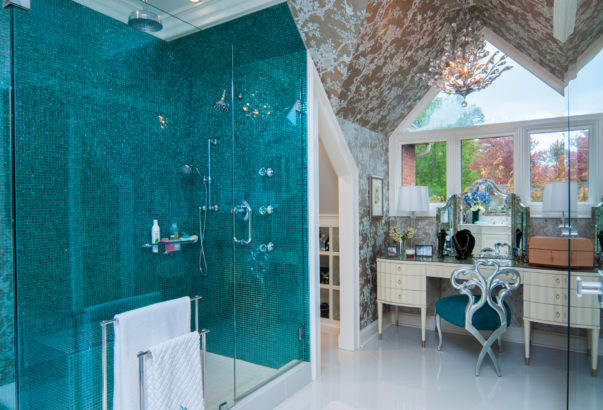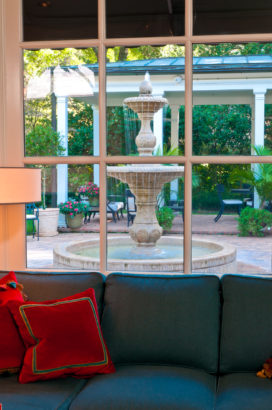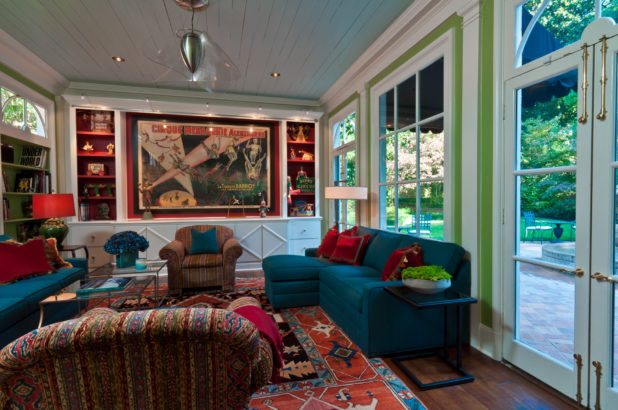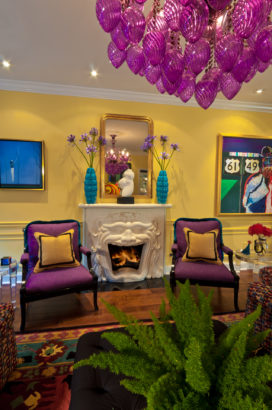What exactly goes into photography?
Author and Creator: Mike Boatman
© Mike Boatman 2018
I’m a commercial advertising photographer.
In an earlier blog titled “Why Mike Boatman?” I explained that there are three main categories of photography. I really cannot overstate the vast difference within these categories.
As an analogous example, let’s say that I need to hire a painter. Do I need a portrait painter to create a piece of art for the wall or do I need a house painter to paint the wall?
Or, for example, I need tools to paint with. Should I use a 6-inch paintbrush, a roller, a sponge, a spray gun, trim brush, or a fan brush? Simply put, you need to choose the right tool to accomplish the task.
The question is the same when it comes to photography: How do you choose the right photographer?
I’ve spoken about this before in my series, “Money Photography Profit”. Now I would like to go a little deeper and approach the issue from a different direction. The goal is to better equip both clients and photographers to make wise decisions.
The first step in choosing the correct photographer is acknowledging that not all photographers are the same, and that different categories of photography require different skill sets. Therefore, you need to begin by matching the appropriate photographic skill set to the task at hand.
To approach this from a slightly different angle, I would like to explain my thought process for a typical photography assignment and walk you through the considerations that I need to evaluate for a successful outcome.
A “successful outcome” is when goals of the client are met or exceeded and when the intended performance purpose of the imagery is achieved.

Designer Cheryl Lee Smith Interiors www.qualiteinteriors.com
Let’s consider this scenario:
A nationally recognized interior designer, best known for incorporating dramatic color elements into the living space design has contracted me to photograph an exceptional property for print ads, website case studies, blog educational purposes, distribution to magazine publications for articles, distribution to industry-trade contest and distribution to multiple social media platforms that allow image sharing.
These are the steps in my process:
- I research and understand exactly what my client is noted for and make certain that I’m accentuating that aspect of their style.
- Formats for print ads typically are vertical. Because of the influence of the Internet and social media, magazine publications often suffer with not having enough vertical images. I’m going to photograph each scene both horizontally for web applications as well as vertical for print applications.
- I always photograph in raw so that I’m not limited in post by any size requirements or processing adjustments that need to be made.
 Note: JPEG format is a destructive format. It starts deteriorating the quality of the image by the third generation. If you photograph your images in JPEG, the image in camera is generation one, transferring it to your computer is generation two. If you make any processing changes whatsoever, like color balance, that’s generation three.
Note: JPEG format is a destructive format. It starts deteriorating the quality of the image by the third generation. If you photograph your images in JPEG, the image in camera is generation one, transferring it to your computer is generation two. If you make any processing changes whatsoever, like color balance, that’s generation three.
- I determine what lighting equipment will be needed to balance the inside environment with the outside environment to capture the style of my client. How many windows? Are there open archways leading into terraces? Which direction does the property face? At what time of day do we have sunlight on the terrace?
Note 1: It’s been stated that you only have 15 minutes to photograph the sunrise. Guess what? The relative movement of the sun is constant. The earth isn’t slowing down or speeding up because of sunrise. Perfect light on a given area can sometimes be measured in minutes.
Note 2: Direct sunlight’s volume of foot candle intensity is far greater than handheld strobes. When balancing artificial light with sunlight to make a scene look natural, you’re dealing with volume of light. Simply increasing the sensitivity or ISO of the camera does not address a balanced ratio.
- I calculate the needed set-up time for each scene and schedule appropriate time and/or personnel to meet the time restraints set by either property owner, client, or the sun. In a pre-meeting with the client, we discuss time considerations and equipment so that everyone is on the same page.
- I discuss with the client whether I am to be documenting their style or adding lighting techniques to increase drama to accentuate their style. In many cases both are required on a photo shoot. For example, you’re going to need to add dramatic lighting effects for the images going to trade competitions and possibly print advertising. On the other hand, you need more of a documentary approach for case studies and possibly magazine articles.
- I explain the format of final delivery of images. Typically, I deliver my digital images in multiple formats in separate folders. The folder name incorporates the usage of the images contained. For example, I typically deliver three folders titled “XYZ project for print, XYZ project for web, and XYZ project for social media. Print images are very large because they need to be full size at 300 dpi. Such large image files would crash computers and or be extremely slow downloading. Web images need substantially smaller pixel size and typically range from 72 dpi to 120 dpi. For social media, these images are shared.
Note: Most social media platforms do not support metadata. Therefore, the second the image is uploaded, documentation of ownership of the image is lost and the image becomes what is referred to as orphaned work. Your client loses accreditation because no one knows it was their project. My social media images have printed text in the image for accreditation purposes – for my client as well as me. This way as they are being shared, accreditation is not lost.
 In this scenario, a critical issue that needs to be considered is that I’ll be balancing three different light sources that each produce substantially different volumes of light and are of different color temperatures ranging from 2800 K to 6500 K. In layman’s terms, the color range of light will be moving from yellow to blue and from extremely weak to grossly overpowering in volume.
In this scenario, a critical issue that needs to be considered is that I’ll be balancing three different light sources that each produce substantially different volumes of light and are of different color temperatures ranging from 2800 K to 6500 K. In layman’s terms, the color range of light will be moving from yellow to blue and from extremely weak to grossly overpowering in volume.
Our brains color-correct automatically on the fly. The camera does not. It can only color-correct for one color in each photograph. For example, when you’re inside a room and you view it with your eyes, it looks naturally and correctly colored. It doesn’t look yellow. And when you look outside the window, everything outside looks naturally and correctly colored. It doesn’t look blue. Your brains also adjust for the 500+% volume of light that’s outside produced by the sun compared to the 75W incandescent lightbulb of the lamp inside the room. Thanks to our incredible brains, we see both the inside of the room and outside as being correctly illuminated and at the same color balance. The camera cannot do this.
Some choices have potential to harm a reputation or perception. Here’s an example:
I recently had an interior designer tell me that they were planning to hire a real estate photographer to photograph their design projects. This would be a correct choice, provided that the room has no windows, no window treatments, and you’re only intending to document one room or space at a time.
 This isn’t to say that a real estate photographer isn’t skilled, but their job requires them to document the space – or to document the room. They don’t need to be able to simultaneously see outside the window. It’s not critical for their image to be evenly lit across the entire living space or looking into another room through an open doorway, such as a dining room, because they’re going to photograph the dining room also.
This isn’t to say that a real estate photographer isn’t skilled, but their job requires them to document the space – or to document the room. They don’t need to be able to simultaneously see outside the window. It’s not critical for their image to be evenly lit across the entire living space or looking into another room through an open doorway, such as a dining room, because they’re going to photograph the dining room also.
The keystone effect is an architectural concept denoting when vertical lines are not parallel with each other. This is a technical error that’s overlooked most of the time in real estate photography. However, it is completely unacceptable for advertising print ads for high-end marketing of interior architecture. It is crucial to know that architectural clients have a great sensitivity to the keystone effect in photography, and to ignore that fact will undoubtably be a disqualifier for photographers.
My point in this blog is to simply say that you must analyze the job that the photograph is intended to do, and then assemble the needed equipment to accomplish the task of creating a specific image that does its job. Every client should know that every image you distribute to the general public, regardless of format or platform, is a representation of you – your creativity and skill. Pick a photographer with the correct experience and skill set to demonstrate and document you at your best.
Images are perception and perception is reality when buyers are doing first edit.
“Hi Mike,
Just wanted to let you know that I am receiving THREE awards. YEAH!!! Two awards are from my submissions of Lane ____ project and one award from Madeline ____’s . I am not supposed to let anyone know until after the conference in April, but I wanted to let you in on the secret.
Praise God. It is so great to be able to share this with you.
You made my work shine with beauty. I would never have made these submissions without your artistry.
Thank you Mike. I will fill you in on the details after the awards program. SUPER BIG HUG
– Cheryl Lee”

There are no comments